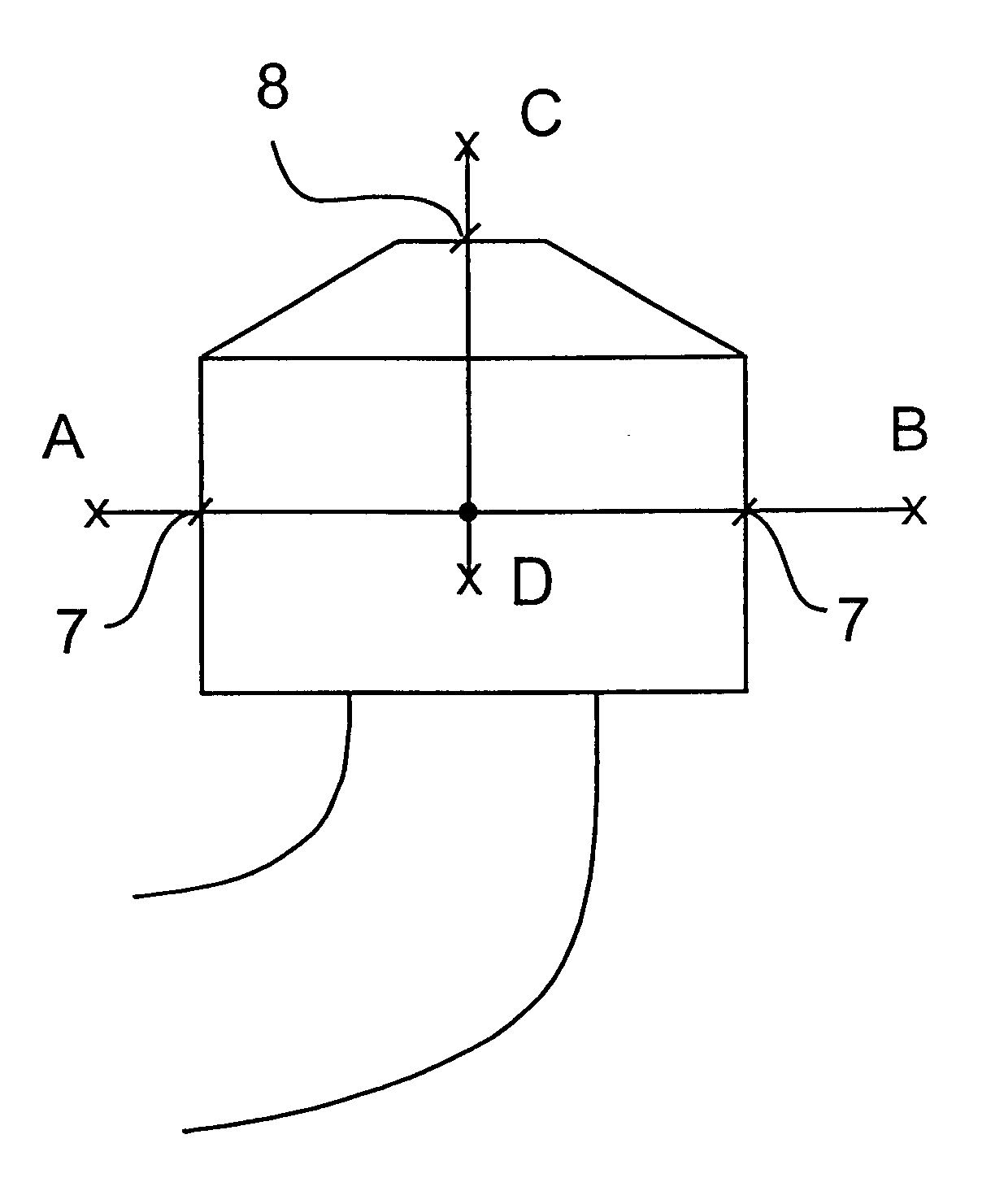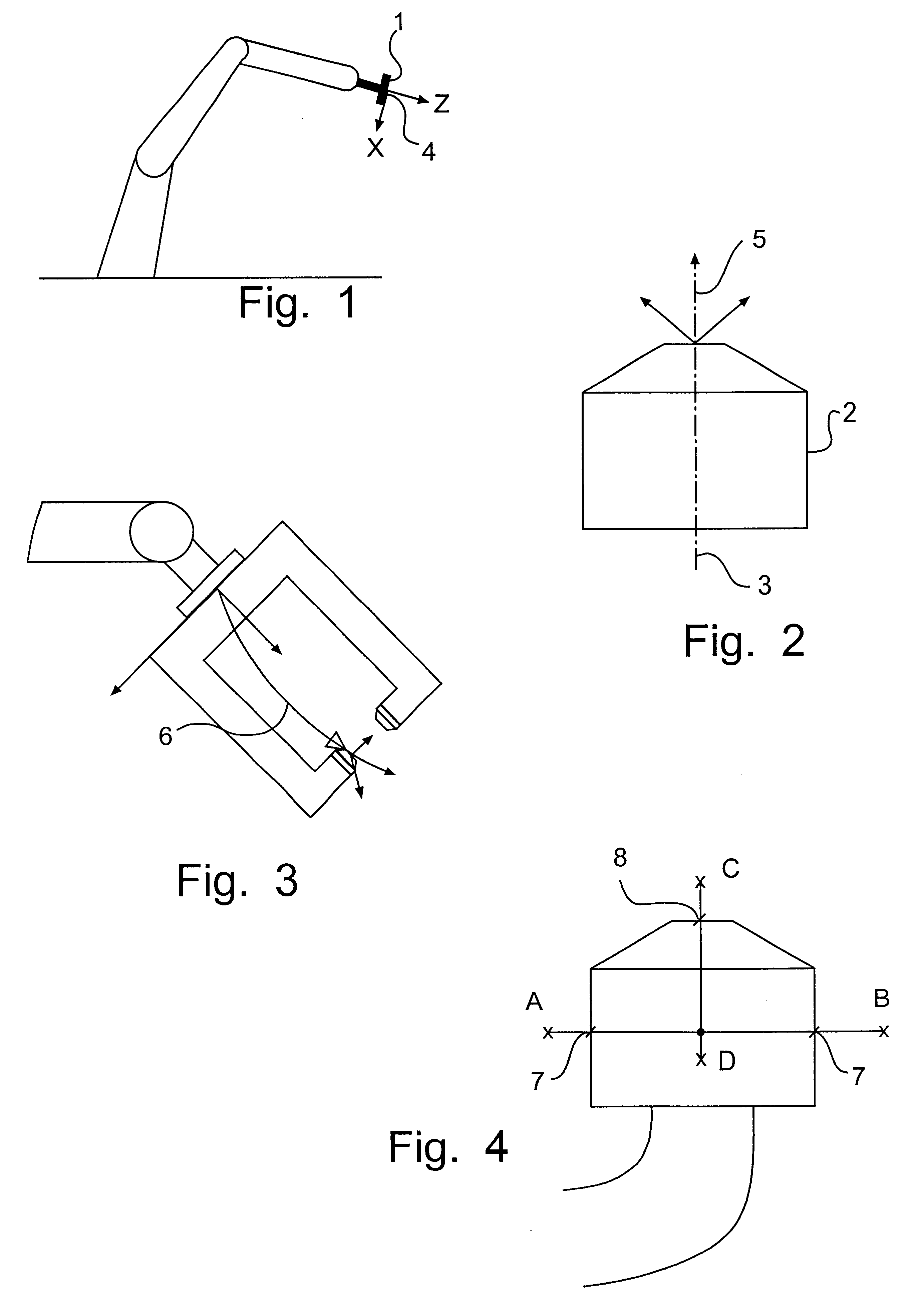Method for cell alignment and identification and calibration of robot tool
a robot tool and cell technology, applied in the direction of programmed manipulators, testing/calibration of speed/acceleration/shock measurement devices, calibration apparatus, etc., can solve the problems of insufficient absolute accuracy to meet strict accuracy requirements, inability to detect erroneous calibration, and the update of robot programs with erroneous calibration data. achieve the effect of broadening the practical applicability and industrial usefulness, and increasing the degree of absolute accuracy
- Summary
- Abstract
- Description
- Claims
- Application Information
AI Technical Summary
Benefits of technology
Problems solved by technology
Method used
Image
Examples
Embodiment Construction
Initially, the invention will be described by means of one practical example in its special application in an industrial robot or manipulator applied for spot-welding by means of a robot-mounted gun having an essentially cylindrical welding electrode.
A spot-welding robot comprising a spot-welding gun normally comprises two welding electrodes, of which one is essentially stationary and the other mobile. In the present case, the stationary electrode 2 is of standard type and essentially cylindrical in shape, the cylinder axis being referenced by numeral 3. The purpose of calibrating the operating point of the tool is to determine the location of an operating position 5, which is unambiguously defined by the electrode geometry relative to the robot-hand coordinate system 4, which is unambiguously defined by the tool fastening plate 1 of the robot, when the gun is open and fixed equalizing achieved. Different users have different wishes in this respect, but the invention may be adapted ...
PUM
 Login to View More
Login to View More Abstract
Description
Claims
Application Information
 Login to View More
Login to View More - R&D
- Intellectual Property
- Life Sciences
- Materials
- Tech Scout
- Unparalleled Data Quality
- Higher Quality Content
- 60% Fewer Hallucinations
Browse by: Latest US Patents, China's latest patents, Technical Efficacy Thesaurus, Application Domain, Technology Topic, Popular Technical Reports.
© 2025 PatSnap. All rights reserved.Legal|Privacy policy|Modern Slavery Act Transparency Statement|Sitemap|About US| Contact US: help@patsnap.com


